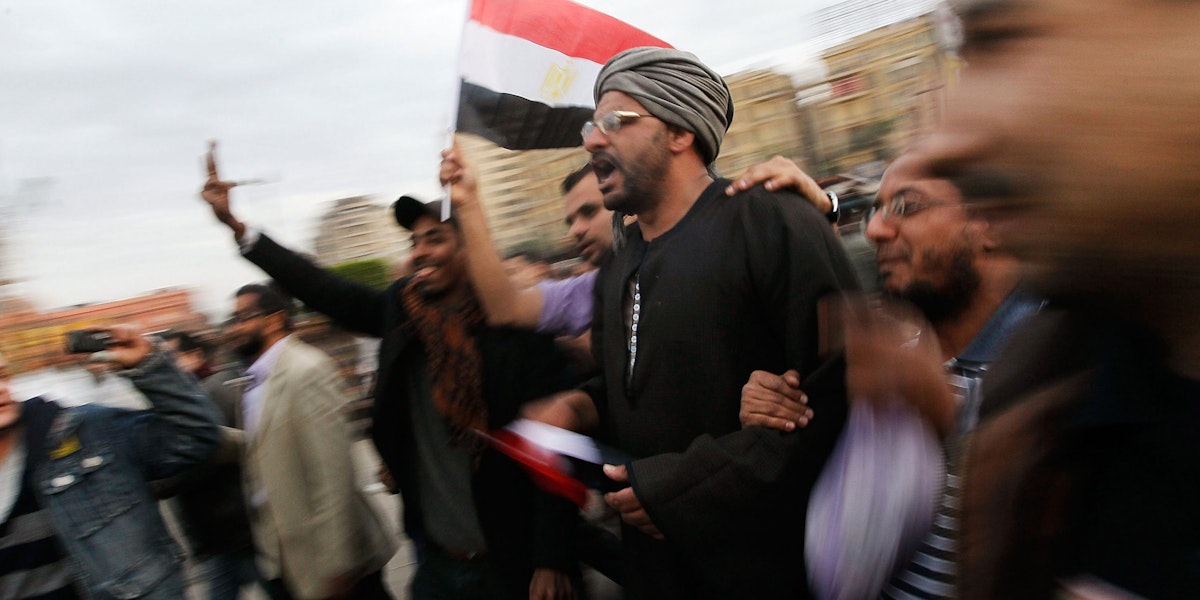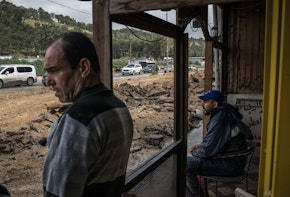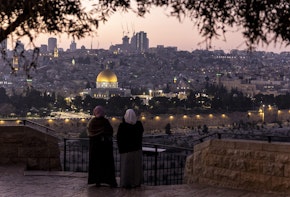Today, as war tests the rules-based international order, a sense of malaise permeates the globe. In countries from Europe to North America to the Middle East and beyond, the general public views politics cynically, as a corrupt and self-serving pursuit of personal enrichment and neglect of the common good. This perception of politics leads to feelings of apathy, indifference, and lack of hope—which then gives corrupt politicians even greater power to abuse the system.
This outcome is not inevitable. Citizens have the power to reinvent politics, and change politics’ role in contemporary society. To restore citizens’ central role in politics, mass movements will be essential, and nonviolent civil resistance will be key to these movements—both their spark and their basic tactic.
History shows us that political transformation as a result of organized, mass nonviolent action is truly effective. I’ve also experienced it in my own work. I was a student organizer and one of the leaders of the Otpor movement, which played an important role in the nonviolent popular mobilization that forced Slobodan Milosevic from power in Serbia in 2000. Since then, I have observed, communicated with, and learned from a dozen dissident groups involved in movements in an array of countries, from the 2004 Orange Revolution in Ukraine, to the 2018–19 Sudanese Revolution against Omar al-Bashir. These groups have little in common in terms of their politics, society, economy, or demographics—yet in all of them, sustained mass civic mobilization played an important role in shifting power and transforming governance.
And in the past decade and a half, the peoples of every region—the Middle East, North Africa, Europe, North and South America, and Asia—have also repeatedly shown their willingness to pour into the streets to demand change, or simply express their anger.
But passion is not enough. No matter how big they are, protests alone do not create political change. They must be nurtured into something more enduring: a movement. This nurturing takes organization. It takes preparation ahead of major street protests, sometimes for years; even more so, it takes planning after the initial enthusiasm of street protests wanes, as it inevitably does, in order to move beyond protest and toward other forms of mobilization. On the other hand, movements cannot be built as directly as formal organizations. Movements are by nature spontaneous, and often have fluid leadership structures; this is all the more true in the Internet age. Yet successful movements do require strategy. What this strategy looks like will vary greatly depending on local context, but it will always require four main features—prerequisites for movement emergence: grievances need to be formulated, institutional failure needs to be exposed, disparate groups need to come together, and strategic skills for civic mobilization need to be sharpened.
The world today faces an array of daunting, networked crises. To name a few: war, COVID-19, inequality, climate change, and ecological collapse. Many of these crises reinforce each other, and there are other persistent maladies that intersect them: racism, sexism, bigotry of all kinds, structural poverty, and exploitative labor practices. Meanwhile, new technologies have led to feelings of alienation, the spread of disinformation, radicalization, and the breakdown of social ties. These problems will not be solved by technology or private enterprise, and they will not solve themselves. They will be solved by politics, and specifically by returning politics to the hands of citizens. We already have a roadmap for how to achieve this, if we are willing to learn from past mistakes, and learn from others’ experiences in other causes and across national boundaries. But there is no time to lose.
The Role for Movements
The crisis of politics plays out differently in different parts of the world. In countries that have democratic institutions, many in society are losing ground economically and are faced with a choice between detached and callous elites and opportunistic populists. These traditional democratic political systems are proving incapable of effectively responding to the needs of ordinary people, and thus the systems themselves are backsliding. In authoritarian and semi-authoritarian regimes, backsliding is even more intense, defying hopes that economic liberalization would eventually lead to political liberalization and that the growth of the middle class would turn these countries into democracies. In fact, worldwide, democratization has reversed and declined for more than a decade, as Freedom House has documented. Authoritarianism is resurgent, civil society is under attack, and traditional international supporters of democracy and human rights are playing defense.
Today, even in countries that have democratic institutions, many in society are faced with a choice between detached and callous elites and opportunistic populists.
But despite the many facets of political crises over the world, and despite the fact that many of today’s networked crises appear “unprecedented,” the examples of successful historical movements are equally diverse, and should give us hope. And as much as the intertwined crises that now face the globe (economic inequality, state violence) may seem cause for despair, they are just as often the triggers of the mass protests that so often provide an opportunity for organizers to transform their causes into movements.
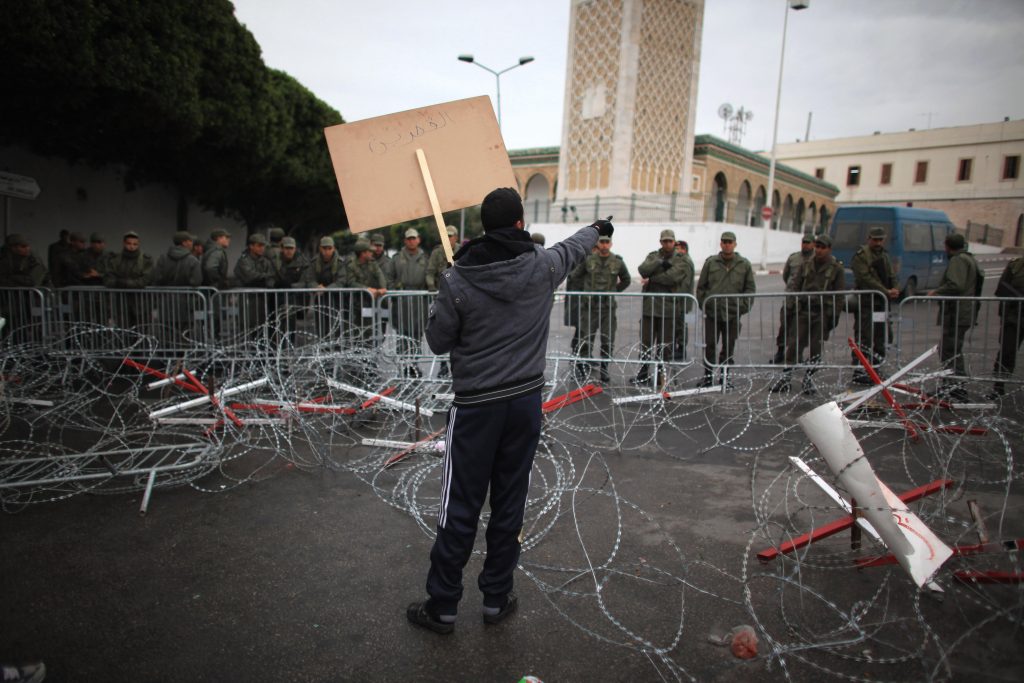
When we think about popular movements engaging in acts of civil resistance, images may come to mind like a street demonstration or a labor strike. There are also major historic events, such as the fall of the Berlin wall in 1989 that ended communism in Eastern Europe, or people descending on Manila in 1986, demanding that Ferdinand Marcos step down after decades of authoritarian rule over the Philippines, or crowds in Egypt and Tunisia in 2010–11 ousting dictators. Other images may be less visually dramatic, but equally powerful, such as the consumer boycotts in apartheid-era South Africa during the 1980s that undermined the economic foundation of racial segregation. Or we may think of courageous individuals who stood their ground in the face of oppression, ordinary people who changed the course of history— like Rosa Parks when she refused to give up her seat on the bus, or Mohandas Gandhi leading the Indian independence struggle against British rule by marching to the Indian Ocean and making his own salt in 1930.
These moments of movement success were not spontaneous, but were rather the result of careful planning. Parks’s defiance was so effective, for example, because it was preceded and followed-up by action from the National Association for the Advancement of Colored People, and linked to the broader Civil Rights Movement. These campaigns put the single act in the context of a wider struggle, and set up a structure that made Park’s acts possible, and in which diverse actors and leaders could emerge.
Nonviolence Is a Proven Tactic
While famous examples are inspiring, we may wonder if those examples are only isolated cases that have little to do with overall trends. Or we may decide that successful movements are just a fluke, due only to the presence of exceptional individuals and exceptional circumstances. Some also point at the disappointing aftermath of the Arab uprisings and suspect that civil resistance is too risky to try, with movements destabilizing institutions and making room for violent insurgents to plunge a country into a civil war.
It is good to doubt Pollyannaish narratives about protests. But for each cautionary tale, there are many more that show that civil resistance is more powerful and successful than most people assume at making real gains for human rights, democracy, and justice. Historical examples contain lessons that can guide us in how we, too, might confront the adversity and crises of our time.
We should be guided by evidence as we seek to answer these questions. Fortunately, we have some strong evidence on which we can base some conclusions. A 2011 study by scholars Erica Chenoweth and Maria Stephan carefully evaluated 323 cases of campaigns challenging sitting governments between 1900 and 2006. About two-thirds of these campaigns were violent, and a third nonviolent.1 Chenoweth and Stephan’s headline finding was that, on average, civil resistance campaigns were successful in achieving their goals 53 percent of the time—more than twice the success rate of violent campaigns.
Nonetheless, recent data also show some tough challenges with which we must contend. Although the historical average success rates are very impressive, since 2010, the success rates of civil resistance campaigns have fallen. This is a worrying trend that needs to be understood better in order for it to be reversed, but it is important to stress that even with the decline, civil resistance remains far more likely to succeed than armed resistance in overturning oppression and achieving freedom, justice, and human rights.
Acts of nonviolent civil resistance can be done by anyone—a single individual, a small group, or a formal organization: a trade union forming a picket line, a person refusing to be conscripted into the military and burning their draft card, or a spontaneous peaceful demonstration. But civil resistance is most powerful when it is waged by broad-based popular movements.
Defining Terms
Although the terms are often confused in popular speech, a protest and a movement are not the same thing. A protest is a short-term tactical mobilization, and a movement is a long-term strategic mobilizing and organizing effort. To better understand the difference, and how a protest can transform into a movement, it is useful to trace the history of the terms, the theories around them, and their use and abuse.
A movement entails a different kind of organizing from a protest. Today, the term “movement” is widely used (and abused) by political leaders, journalists, historians, and sometimes even corporations. Politicians sometimes refer to their political campaigns as “movements.” A spontaneous demonstration or trending hashtag on the Internet is also sometimes referred to as “a movement.” Organizations often claim to be leading “a movement” to indicate the vast following, commitment, and zeal of their members and supporters. Here, people are basically using the term “movement” to claim (rightly or wrongly) that they are popular and that their supporters are engaged (although the range of engagement and commitment may vary considerably).
Movements have more structure than a protest, but also more spontaneity and fluidity than formal organizations.
A century ago, movements were understood differently—as emotional phenomena. In the early twentieth century, theorists, most notably Gustave Le Bon, argued that movements were a form of collective behavior that emerged when significant social and cultural breakdown occurred. They were considered spontaneous, unorganized, and unstructured. Social movements and movement participants were viewed as nonrational, and movements were perceived as unpredictable, characterized by enthusiasm, collective excitement, and mass hysteria.
This paradigm changed somewhat in the later part of the century, when theorists began to focus on movement participants as rational actors and to emphasize the role of purposive formal organizations. Social movements started to be viewed as a rational means for pursuing desired ends, not much different from more traditional organizations.
A careful examination of movements shows that they don’t really fit well into any of the above theories or descriptions. They have structure, but also more spontaneity and fluidity than formal organizations.
For mass action to be considered a movement, it of course needs popular support and engagement. But it also needs to be persistent over time, and perform multiple functions, not just protest. In other words, movements are different from formal organizations, and, at the same time, they are not spontaneous outbursts. Movements are somewhere between the two.
Learn More About Century International
Great Fires from Small Sparks
The struggle for freedom usually doesn’t start with people forming movements. As their grievances are being articulated, the first thing people think about is finding a remedy by engaging with official institutions. When these institutions fail to address their grievances, either because of corruption, state capture, or the authoritarian nature of the system, people take to the streets, challenge these institutions, and expose their failure. Still, protest alone rarely leads to resolution, because institutions that were not responsive to petitions and pleas are usually not responsive to short-term mobilization.
Following the initial excitement that usually characterizes the first big street demonstrations, it soon becomes clear that short-term mobilization, however massive, will not resolve the issue. A long struggle is needed—the protest needs to become a movement. And every once in a while, a protest does transform into a movement—a momentum-driven phenomenon that has the energy of a protest and the longevity of an organization.
Social movements do organize collective mobilization, which has a spontaneous element, but there are also often planned elements that frequently go unrecognized by causal observers. News media sometimes report on mass demonstrations as people’s spontaneous reaction to some trigger event, rather than as a result of the hard work of movements working quietly for years. For instance, as a spokesperson for Otpor in Serbia, I encountered many journalists and other observers who described the nonviolent overthrow of Milosevic in 2000 as a mechanical reaction to his attempted electoral fraud. But these observers hadn’t noticed the movement (which I was a part of) that had spent years preparing to respond to this specific—and predictable—moment in the elections.
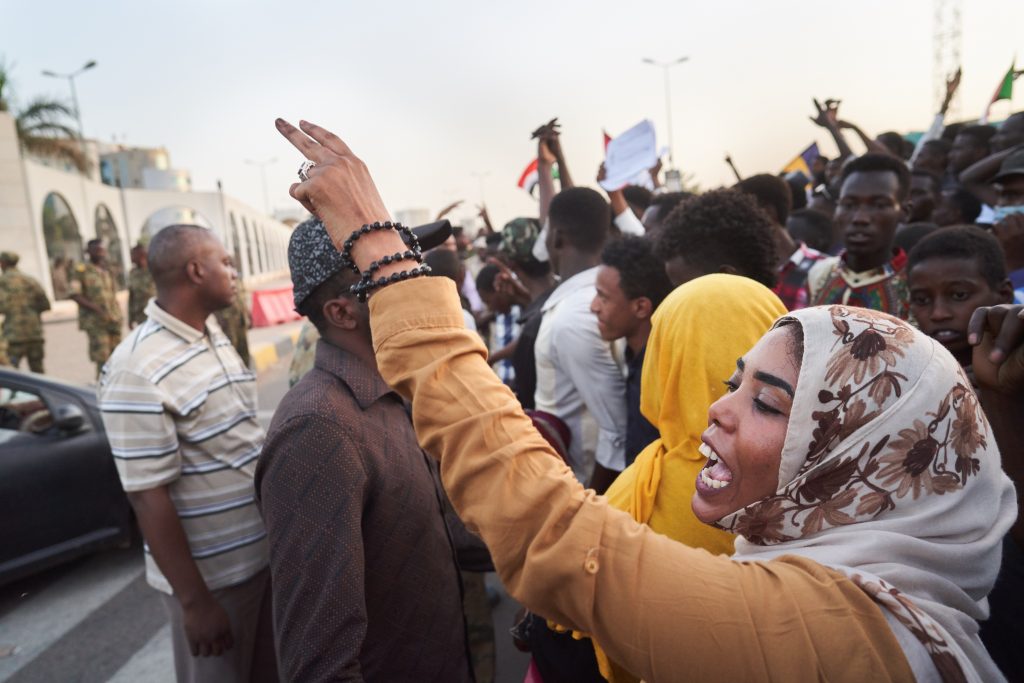
The importance of the spark should not be underestimated, but outside trigger events alone cannot explain the levels of mobilization achieved by these movements, and especially not their longevity—a trait that clearly distinguishes them from protests. For instance, the 2010 self-immolation of Mohamed Bouazizi, a Tunisian street vendor, sparked the Jasmine Revolution in Tunisia and the subsequent uprisings across the Arab world. But no later case of self-immolation—and there were many—caused anything close to the Tunisian revolution. Similarly, there were several cases of election fraud in Serbia prior to 2000, but those earlier cases either caused no backlash or sparked protests that did not achieve their aims.
Trigger events can be unpredictable: Bouazizi’s suicide; Sudanese floods in 2013 that sparked a series of protests and brought together a new generation of activists who would later lead the 2018–19 Sudanese Revolution. But not all sparks are totally unexpected, and some of them can be predicted in their general shape, if not in their specifics. For instance, the murder of George Floyd by the police triggered mass demonstrations across the United States in 2020 and, although this particular murder was not foreseen, such murders were common, and activists connected to the Movement for Black Lives had a ready-made response. In the case of the Serbia election of 2000, activists knew what the trigger would be—even its calendar date—and could prepare for it. Thus, a trigger can cause a spontaneous protest, but a movement prepares for a trigger event ahead of time, and uses it to accelerate mobilization.
Unique Powers of Movements
Movements are not simply protests, but they are also fundamentally different from formal organizations such as political parties, trade unions, civil society, and grassroots associations.
Some movements do appear more formal and seem to resemble traditional organizations. However, even such formal movements are often able to elicit far more public participation than traditional organizations. For instance, the Solidarity Trade Union in Poland in the early 1980s, which successfully led the movement to end communist rule in the country, was formally a trade union, but its membership reached 10 million by the end of 1981. Most of the people who joined Solidarity were not joining a trade union, but rather a movement with a common identity and clear goals.
Similarly, the United Democratic Front (UDF) in South Africa in the 1980s was formally a coalition of some four hundred civic groups, with another 1,000 groups affiliated around the country. Actions of the UDF—like rent boycotts, school protests and worker stay-aways—were so popular that they were joined by people who were not members of any of the affiliated organizations. As in the case of Solidarity, UDF was, on the surface, a structured organization. But it was also a mass movement that was built around that structure in a way that gave opportunity for broader and more spontaneous participation.
Therefore, movements can be placed on a spectrum between fully spontaneous collective action and fully structured organizations, because they share some characteristics of each. Similar to spontaneous collective action (like mass demonstrations), movements are dynamic, characterized by high energy, and responsive—they are quick to react to outside events. But unlike spontaneous protests, movements not only react to events, but also initiate them. Similar to organizations, movements have enough structure to sustain themselves as a conflict plays out and they plan and act more strategically, with goals and objectives rather than just grievances and demands. Movements’ identity is also much more developed than that of spontaneous protests. Unlike protests, which need a location for people to gather—say, a city square—a movement can exist wherever there are people ready to join it. In fact, movement participants bring the movement to their town, their neighborhood, and their community.
Movements can be placed on a spectrum between fully spontaneous collective action and fully structured organizations, because they share some characteristics of each.
Movements are so important because of their ability to increase participation, something traditional organizations are not very good at; and in their ability to act strategically over a long period of time, something spontaneous protests could not achieve.
While movements can be viewed as some sort of a hybrid between protest and organization, they rarely start this way. In some cases, traditional organizations become more loosely structured and less rigidly controlling in an effort to increase participation and become movements, but this is rare. More often, spontaneous protests transform into movements as protestors fail to achieve victory with one tactic—nonviolent demonstrations—and reach a conclusion that a more strategic approach is necessary in order to wage struggle over a longer period of time. Most protests fail to become movements, but there are enough cases to show this transformation does indeed happen.
Political struggle usually takes time, and protests do not last long enough. Energy dissipates, momentum slows, and the protest ends, sometimes achieving short-term objectives, but rarely long-term goals. Sometimes activists learn the wrong lesson after they hit the wall, abandon protest as a method of political struggle, and choose the “long march through the institutions” instead. Or they get carried away by dreams of romantic armed rebellion, which is everything but romantic when they wake up in the bush.
Organizing to Learn from Failures
A few examples from my own experience show how moments of movement disappointment are not only unavoidable, but are important tests for organizing—and can actually lead to stronger movements.
In 1996 in Serbia, I spent days on end in marches and rallies following fraud in local elections. Those protests achieved some local victories (they successfully countered the attempted falsification of the local elections) but failed to defeat the regime of Milosevic. There was a sense of disappointment and apathy following those protests, but my fellow protesters and I had time to rethink our methods. Over many months, we strategized about how we could achieve a more long-term mobilization. We decided that our marches through Belgrade were a misdirection of energy—too much of the rest of the country was unaware of our struggle. We changed our tack, and decided to engage citizens directly.
This was the birth of Otpor. And it’s a story that shows how movements can build on themselves. Our initial actions didn’t achieve our main aim—the ouster of Milosevic. But they opened a way for a new generation of activists and a better strategy, which ultimately managed to defeat Milosevic through elections in 2000.
Similarly, in Kiev in 2001, mass protests in response to the brutal murder of journalist Georgiy Gongadze failed to pressure President Leonid Kuchma to step down. But they did cultivate a new generation of activists, who spent three years building a movement. In 2004, these activists launched the Orange Revolution, which shifted power and transformed the country (even though the 2014 Revolution of Dignity protests are better known to casual observers).
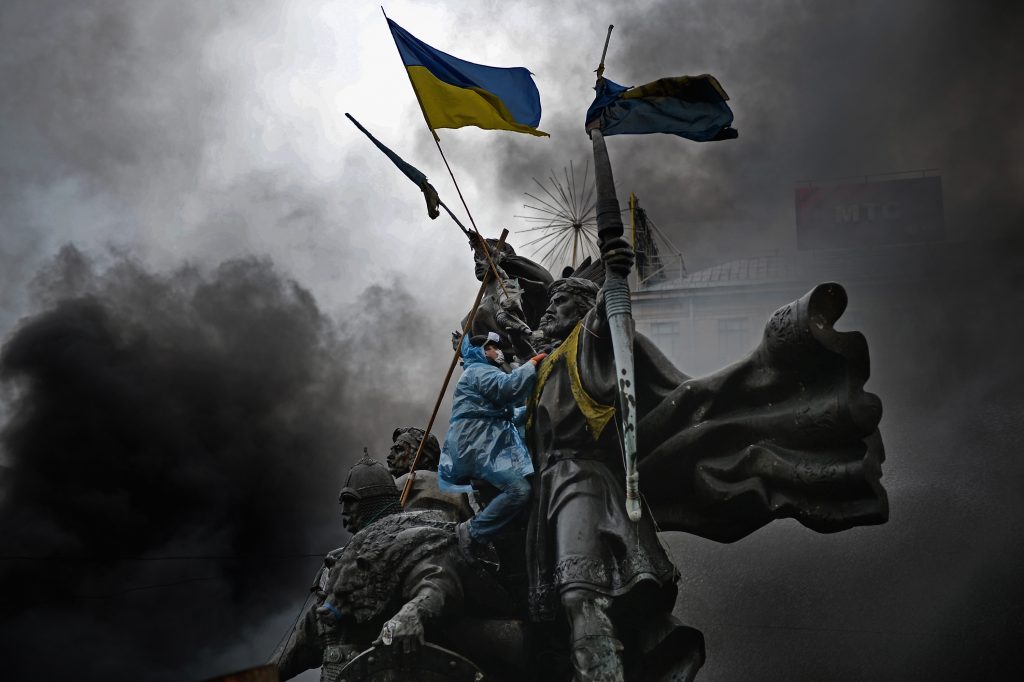
During my many interactions with Ukrainian organizers, they stressed the importance of not only their 2001 experience, but also the time they had, after the initial failure, to develop a cohort of activists and a strategy that focused on mobilizing voters across the country. They prepared these voters for the need to counter election fraud with a sit-in at Independence Square in Kyiv. They successfully petitioned for a revote, and Victor Yushchenko became the president.
A common thread in each of these countries was that the movement organized a significant part of its struggle outside of existing institutional models of change. Over time, some movements developed allies that had access to institutions and could help them make formal change within those institutions. And in both Serbia and Ukraine, the institutional channel of voting was very important. But the primary driver of each of these struggles was a civil resistance movement. Without a civil resistance movement, institutional methods would have failed (as they had in the past).
Systematic Skill-Building
Preparation for trigger events requires forward thinking and a strategic mindset, but not just as a feature of movement leadership (something that would be sufficient in formal organizations thanks to their hierarchical nature), but as a practice throughout the movement structure. Skill-building is the foundation of such a mindset. The daily work of movements builds skills, and training can accelerate the learning process.
As one of the leaders of Otpor, I would spend several hours every Tuesday training new members: not just explaining the goals and methods of the movement, but teaching practical skills—how to recruit people, how to talk to the media, how to design a flier. The training would end with a street action, however small, so that the recruits would immediately have a baptism by fire. In my training, I would focus on practical skills that helped internalize concepts like power, loyalty shifts, and participation. I wanted participants to organically adopt a strategic mindset. People would leave these training sessions feeling like they were part of a consensus on means and ends—which was crucial to building cohesion in the movement.2
This experience became a bedrock of my later work with dissident groups around the world: I would insist on skill-building through interactive training, with an emphasis on learning by doing. Leaders of a movement, I believe, need to be educators—not instructors who possess all the knowledge and pass it on to their followers, but rather facilitators of collective learning experiences in which activists and organizers practice, grow, and refine their strategic skills and put them to use.
This experience became a bedrock of my later work with dissident groups around the world: I would insist on skill-building through interactive training, with an emphasis on learning by doing.
Skill-building also happens across movements. Otpor’s success in 2000 was inspired and informed by the Slovak students who ran a successful get-out-the-vote campaign in 1998. Later on, Otpor inspired and trained Ukrainian activists to prepare for the 2004 election, which helped prepare them to lead the Orange Revolution.
There are different ways to approach training, and in my work, I’ve tried to figure out the pressure points that create the biggest benefit for the least amount of effort and resources. When I worked as the director of movement support for Rhize, a nonprofit that trains organizers, I piloted a coaching model centered around a one-day practical workshop in movement-building called First Exposure Trainings (FETs). FETs aimed to equip communities with practical organizing and mobilizing skills, and create a framework in which they could start planning, first tactically and then later more strategically. In the training, coaches would map, identify, and convene community leaders to facilitate the creation of a nucleus of a future movement. Currently, at the International Center on Nonviolent Conflict, I am piloting a somewhat different model called the “Checklist Exercise for Freedom”—an interactive brainstorming session to help dissidents in the midst of a struggle evaluate their progress through a three-step process: self-assessment, innovation, and commitment to ideas generated in the previous step.3
In my view, skill-building for a strategic mindset is key to enabling organizing around the structure that characterizes movements, in contrast to formal organizations (which are often limited by their structure) and spontaneous protests (which, without a structure, cannot result in sustained participation). Movement structure is horizontal rather than hierarchical. Shared culture and skills across the movement are thus essential, because they provide unity around goals and methods, and help movements be resilient in the face of threats, intimidation, and repression.
Making Movements from Protests
What can we do to support a protest that is on the verge of transitioning into a movement? It is clear that we cannot build movements directly as we would formal organizations. Spontaneity and improvisation are important ingredients for movements. But this doesn’t mean we have to sit back and watch. There are things we can do to make movement emergence more likely.
In the formative stages, before the movement takes off, formulation of grievances seems to be indispensable for movement emergence. The existence of a problem and the hardship that it produces do not naturally lead to movement formation, nor does the failure of institutions to solve the problem. Articulation of grievances—exposing institutional failure through reports or whistleblower testimonies, and voicing grievances of people affected by injustice—are critical. Such formulation of grievances does not, alone, produce a movement, but it creates fertile ground for movements to spring up.
Another condition for movement emergence is the creation of structures that bind together different groups, cultivate interactions between individuals, and facilitate the grassroots emergence of movement leaders. Creating such structures does not directly result in a movement, or even a coalition. But it creates space for diverse activists to spend time together, resolve differences, discuss strategy, and shape a common identity. This is crucial for the longevity of a movement: in a coalition, people represent their constituent organizations, while in a movement, people represent the movement—its goals, methods, and values—in constituent organizations. Their loyalty is with the movement, and this loyalty is what keeps them together despite differences.
Finally, movements need to master the method of civil resistance, to conjure up tactics such as strikes, boycotts, and nonviolent interventions. These actions, when implemented well, cause defections from the institutions and organizations that uphold the status quo, and thus weaken these pillars of support to the systems movements seek to challenge—shifting power by shifting loyalties. The skills needed for practicing civil resistance—such as maintaining nonviolent discipline, as well as strategic planning capacity—are built over time. As the saying goes, excellence is not an act, but a habit. The winning strategy is not the result of strategic genius, but is rather born out of numerous meetings, brainstorming sessions, and the interactions of activists and organizers.
All of these activities also require an institutional framework, whether inside or outside the movement. Such institutions offer platforms for whistleblowers exposing institutional failure, publishing reports, hosting meetings, and conducting training. Relatedly, these activities also require actors who will support movement emergence, apart from the grassroots activists and organizers who eventually build and lead the movements. These actors and institutions can be transnational. An example of such an actor is the African Coaching Network (ACN), with whom I have worked to build activist skills. The organization uses networks to foster learning across the continent. Through ACN coaches, who are embedded in movements in their respective countries, ACN-linked movements learn from each other.
Combining all of the activities listed above—formulation of grievances, creating structures, and skill-building—does not automatically make a movement. But these steps do facilitate movement emergence. The undertaking is akin to gardening: we do not grow vegetables; they grow on their own. But we water them, pull the weeds, and make sure the soil is fertile.
The world is in crisis. When we look at images coming out of Ukraine, we can clearly see the connection between dictatorship and war. The world has to deal with the consequences of the Russian invasion, but we also have to think about and address the root causes of conflict. We need to solve the problem of authoritarian resurgence, not just for the sake of democratization, but to achieve stability. Many observers are saying that the engagement with dictators like Vladimir Putin has only appeased and emboldened them. Others fear that pushback and military response would lead to escalation with a nuclear power.
The way to get out of this binary is to expand the battlefield by counting on popular nonviolent movements.
I came of age in the late 1980s in Eastern Europe, and lived through an era of authoritarian collapse. Do you remember the intercontinental ballistic missile that hit the Berlin Wall and brought it down? Neither do I. The wall fell not from a missile, but from a hammer held by a citizen of East Berlin. In the current standoff between democracies and authoritarians, there is a dark horse, a political force that can prove decisive in determining the outcome: broad-based movements using methods of civil resistance to shift power in their countries away from authoritarians, and achieve freedom, democracy, and respect for human rights.
This report is part of “Transnational Trends in Citizenship: Authoritarianism and the Emerging Global Culture of Resistance,” a TCF project supported by the Carnegie Corporation of New York and the Open Society Foundations.
header image: Anti-government protesters march in Tahrir Square February 4, 2011 in Cairo, a week before Hosni Mubarak stepped down from power after thirty years of rule. Source: Chris Hondros/Getty Images
Notes
- The researchers sought to understand if civil resistance could work against really hard cases, so they looked only at campaigns that and sought to achieve “maximalist” objectives—either a change of government, territorial secession, or the withdrawal of a foreign occupier.
- I take this idea from Tina Rosenberg’s Join the Club (New York: W. W. Norton, 2011).
- This method is based on the book The Checklist to End Tyranny by Peter Ackerman (Washington, DC: International Center on Nonviolent Conflict, 2021), which itself was inspired by the Atul Gawande’s Checklist Manifesto (Delhi: Penguin Books India, 2010).
